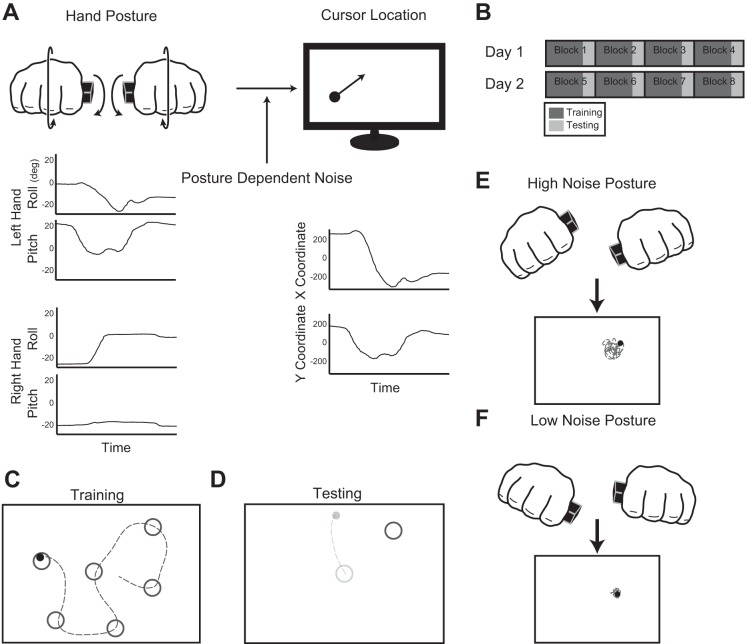Fig. 1.
Experimental paradigm. A: participants manipulated the pose of 2 inertial measurement units with their hands to control the location of a cursor on a computer screen. The task was redundant in that hand motions had 4 degrees of freedom but there were only 2 degrees of freedom for the computer cursor. For half of the participants, posture-dependent noise was added into the interface between movements and visual feedback. B: participants practiced using the interface over 2 consecutive days. During each day, participants alternated between 50 training trials and 8 testing trials. C: during training, participants reached to 50 targets, always an equal distance from the previous target. D: during testing, visual feedback was removed from the onset of movement until the participant stopped moving. Here, the faint colors indicate when visual feedback was removed. E and F: since the task is redundant and the amount of noise was posture dependent, there were independent hand postures that would produce the same cursor location with varying noise. E shows a high-noise posture, and F shows a low-noise posture. We predict that through training subjects will learn to adopt low-noise postures to complete the task.

